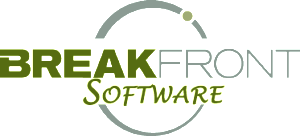
Like a lost treasure, salespeople armed with a prospect’s budget get the equivalent of a map with a large “X marks the spot.” But what is it really? Is it a number, a range or a figment of someone’s imagination?
I have a a friend, we’ll call her Molly, who has the uncanny knack of finding all the exceptions in life. Smoking causes cancer, you say? No problem, she knows someone who lives to be 100 who smoked every day. Sunflower butter causes restless leg syndrome? There she is again with her double-barreled exception gun, cutting you off at the pass with a 125-year-old woman she knows who ate 4 billion tons of it and is has never moved her legs. Go figure.
So when we talk about concepts, like budget, from our 4M Sales Process, we’re talking about the masses. The norm. The typical. Of course you’ll know an exception or two, but these are best practices for the majority of situations.
In the diagram below, a prospect’s budget is depicted as more of a range. After all, what is a budget anyhow? It’s just an arbitrary limit people set so the conversation has some boundaries – and it’s usually pulled out of what you’re sitting on as you read this.
The comfort zone
For example, a prospect might be comfortable with spending somewhere around $8K on their bathroom remodel. Some would argue this is their magic number, but we think this is a mistake.
In actuality, Budgets are “wiggly”.
A comfort zone in this example is more like a range between $6K and $10K. Don’t get hung up on the formula behind those two numbers – just think “wiggly range.”
People don’t inherently understand what things cost to make. We are very good comparison shoppers, but show us a shiny new, one of a kind iPhone and we’ll gladly pay a premium for it. Why? Because we really have no earthly idea on what things should cost (especially complicated things), we buy on emotion and then we rationalize with logic.
Think of it this way: Apple is the world’s most valuable company because all of the “premiums” we paid into their company coffers ballooned their cash stores. You don’t get cash in that quantity unless you have very healthy profit margins – or maybe another way to think about it is that we all seriously overpaid for those products.
The discomfort zone
Prospects begin to feel squeemish when you approach their discomfort zone. Their face may even contort, their eyes may squint – it sometimes even looks like they may be constipated and experiencing physical discomfort from too many bananas the day before. In this example, the discomfort range would be near the $12K mark. That’s the discomfort zone – and it too has a range, probably $10K to $15K.
Push too far up into a prospect’s discomfort zone and things really do get constipated – maybe even stop altogether. But getting a little bit into a prospect’s discomfort zone is okay – that’s the green checkmark in the diagram.
And that really is the “magic range” where you want to be.
In part two of this post, we’ll discuss more about the “Ocean Apart” and the “Questionable Zone.” Stay tuned for more.


